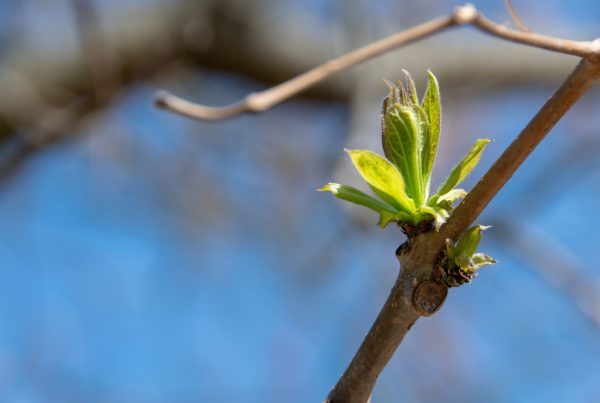Choosing a new tree takes careful planning. If there are sections of your property with drainage issues or constantly wet soil, consider the following trees for the landscape:
River Birch
The river birch (Betula nigra) is most often found in the flood plain regions of Wisconsin and can be a great addition to the yard in the coolest possible environment to help control erosion. Many birds like ruffed grouse and wild turkeys eat river birch seeds, and use the trees for nesting, food and cover.
Planting tips:
- Acidic, wet and clay soils are optimal for planting conditions
- Plant in a north or east sloping site, or near another tree that shades its root zone
- Requires at least four hours of direct sunlight every day
- Bears an oval shape, reaching heights of 40–70’ with a 40–60’ canopy
Features:
- Green, glossy leaves formed in a triangular shape
- Brown and green catkins (flowers that provide fruit with seeds inside)
- Colorful, peeling cinnamon-colored tree bark once fully grown
- Helps control erosion
Tamarack
The tamarack (Larix laricina) is a deciduous conifer and the only one in our state with needles that change color and fall from the tree in autumn. The tamarack leafs out in early spring with needles developing in four to six weeks. It’s also makes a great landscape partner to the black spruce, balsam fir, and northern white cedar trees.
Planting tips:
- Suitable tree to plant in the spring or fall
- Grows well in poorly-drained soil
- Requires full sun; keep away from the shade of fast-growing trees
Features:
- Flexible bright green needles shaped like a flower’s petals
- Small, round fruit that stays on the tree for several years
- Rough bark with reddish-brown scales
- Grows to a height of 50-75’




